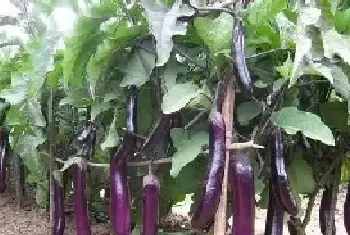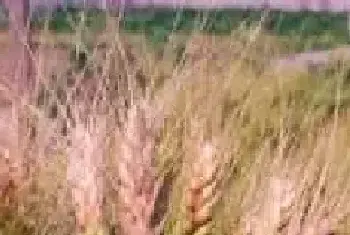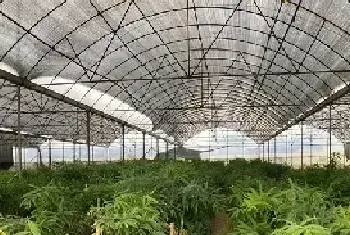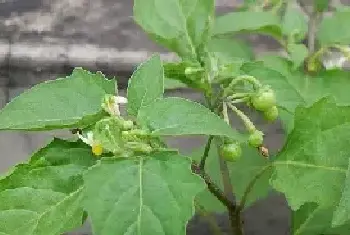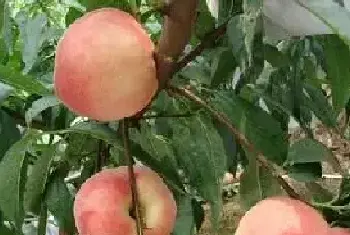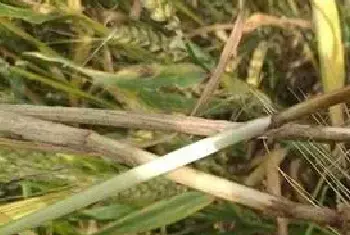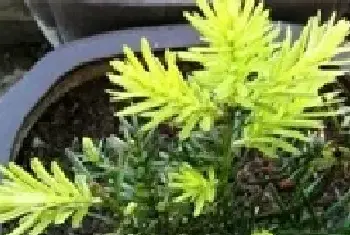TI: Control of mites in paddy straw mushroom with acaricide, ethion.
AU: Rathaiah-Y; Barooah-AK; Dutta-SK
SO: Mushroom-Research. 1997, 6: 2, 103-104.
LA: English
AB: Ethion 50 EC at 2.5 ml/litres, could be safely used with a waiting period of 11 days, in mushroom beds against Tyrophagus dimidiatus.
PT: Journal-article
AN: 981110628
TI: Post harvest fungal contaminants of Pleurotus sajor-caju and Volvariella volvaceae and its biological management.
AU: Gogoi-P; Baruah-P; Griensven-LJLD-van (Editor)
SO: Science and cultivation of edible fungi. Proceedings of the 15th International Congress on the Science and Cultivation of Edible Fungi, Maastricht, Netherlands, 15-19 May, 2000. 2000, 741-744; 6 ref.
PB: A.A. Balkema; Rotterdam; Netherlands
LA: English
AB: Two edible mushroom varieties, Pleurotus sajor-caju and Volvariella volvaceae [V. volvacea] were contaminated by moulds during the process of steeping preservation. These moulds are predominantly found as postharvest pathogens under typical agro-climatic conditions of the North Eastern region of India. Nutritive values and organoleptic qualities of the two species of mushrooms were found to reduce, due to these contaminants and thus the products are rendered only fairly acceptable for consumption. Therefore, an attempt was made for biological management of these fungal contaminants. Investigation revealed that lactic acid bacteria such as Lactobacillus could inhibit the growth of these moulds.
GE: India-
PT: Conference-paper
IB: 90-5809-145-7
AN: 20001007833
TI: Biology of springtail, Seira iricolor Yosii and Ashraf, infesting mushrooms.
AU: Gill-RS; Sandhu-GS
SO: Mushroom-Research. 1995, 4: 2, 91-94; 11 ref.
LA: English
AB: The biology of Seira iricolor was studied on edible fungi in the laboratory. Eggs were laid singly or in small groups on paddy straw pieces. At 22.5 and 30C, the mean fecundity was 15.8 and 9.1, resp., the incubation period was 4.9 and 22.5 days, the prereproductive period 15.1 and 10.2 days and adult longevity 31 and 22 days. Oyster mushrooms were preferred to button mushrooms for feeding, and more feeding occurred at 30 than at 25, 20 or 15C. S. iricolor was active throughout the year on button, oyster and paddy straw mushrooms in the Indian Punjab. Maximum activity occurred during July-August on tropical mushrooms (Volvariella volvacea). In the absence of mushrooms, S. iricolor survived on moist organic matter near mushroom houses.
GE: India-; Indian-Punjab
PT: Journal-article
AN: 971102097
TI: Preliminary study on the straw mushroom disease Gliocladium virens.
AU: Luo-YinZhen; Liu-JianZhen; Luo-YZ; Liu-JZ
SO: Journal-of-South-China-Agricultural-University. 1995, 16: 1, 76-79; 8 ref.
LA: Chinese
LS: English
AB: Fruitbodies of Volvariella volvacea were rapidly damaged by a fungus identified as G. virens. The opt. temp. and pH for development of the pathogen were 25-30C and 6-8, respectively. Sufficient oxygen was also a requirement.
PT: Journal-article
AN: 961003529
TI: Identification of a pathogenic bacterium causing brown rot of straw mushroom in South China.
AU: Liu,-JZ; Luo,-YZ; Chen,-YH; Yuan,-YS; Faan,-HC
SO: Journal-of-South-China-Agricultural-University. 1989, 10: 1, 17-22; 8 ref.
LA: Chinese
LS: English
AB: Brown rot of Volvariella volvacea has caused serious damage in Guangdong, Fujian and Guangxi provinces. Based on morphology, culture characteristics, biochemical and serological tests, the bacterium was identified as a Xanthomonas sp.
GE: China-; Guangdong-; Guangxi-; Fujian-
PT: Numbered-Part
AN: K362929
TI: Volvariella volvacea virus - a new fungal dsRNA virus from mushroom.
AU: Chen,-KY; Liang,-PY; Chang,-ST; Yu,-ML
SO: Acta-Microbiologica-Sinica-Weishengwa-Xuebao. 1988, 28: 1, 19-23; 15 ref.
LA: Chinese
LS: English
AB: Icosahedral virus particles of 35 nm diam. were found in the fruiting body of V. volvacea collected at the Chinese University of Hong Kong. Virus preparations had a max. absorption of 257 nm and a min. at 230 nm; the 260:280 ratio was 1.96. One band was observed in 0.5% agarose gel eletrophoresis and 1 band of coat polypeptide (60 000 dalton MW) was obtained during 13% SDS discontinuous PAGE. Nucleic acid prepared by phenol/chloroform/isomyl alcohol (50:50:1) extraction of virus particles, revealed a single band at 0.8% agarose gel electrophoresis. Results of DNase and RNase treatments were compared with those of Penicillium chrysogenum viral dsRNA and Bacillus subtilis bacteriophage SPP1 DNA. It is concluded that the nucleic acid of this virus from V. volvacea was dsRNA.
GE: Hong-Kong
PT: Numbered-Part
AN: K295032
TI: Fungicides to control fungal competitors in Chinese straw mushroom.
AU: Rivera-Vargas,-LI; Hepperly,-PR
SO: Journal-of-Agriculture-of-the-University-of-Puerto-Rico. 1987, 71: 2, 165-176; 9 ref.
LA: English
LS: Spanish
AB: Laboratory and production bed observations revealed that the major fungal competitors of the Chinese straw mushroom (Volvariella volvacea) growing on sugarcane bagasse are Sclerotium rolfsii, Corticium sp., Coprinus sp., Aspergillus flavus and Chaetomium globosum. The selectivity of fungicides for the control of these fungi was tested in vitro. Benomyl, captan, carboxin, chloroneb, mancozeb and pentachloronitrobenzene [quintozene] were tested in poison agar tests at 1, 10 and 100 p.p.m. a.i. Mushroom radial growth was reduced in all treatments of carboxin and at 10 and 100 p.p.m. chloroneb. Quintozene was intermediately toxic. V. volvacea was tolerant of all concn of benomyl, captan and mancozeb. A. flavus radial growth was highly reduced with benomyl and slightly reduced by carboxin, chloroneb and quintozene. S. rolfsii showed growth reduction at 10 and 100 p.p.m. quintozene, chloroneb and carboxin. Growth of Coprinus sp., Corticium sp., C. globosum and A. flavus was reduced > 90% with treatments of benomyl at 100 p.p.m. Fungicidal sprays were evaluated in vivo on sugarcane bagasse and coffee pulp beds. Poor pasteurization of the coffee pulp was associated with rapid development of A. fumigatus and Mucor sp. Partial superficial control of these fungi was obtained with mancozeb alone (50-75% reduction of visible growth). Benomyl alone and in combination with mancozeb gave excellent suppression of fungi on the mushroom beds (90% reduction of visible growth). None of the treatments controlled fungi within the beds.
PT: Numbered-Part
AN: K053470
TI: Bacterial basal rot of straw mushrooms.
AU: Hepperly,-PR; Ramos-Davila,-E
SO: Journal-of-Agriculture-of-the-University-of-Puerto-Rico. 1986, 70: 3, 219-221; 5 ref.
LA: English
AB: A disease of Volvariella volvacea caused by Pseudomonas chlororaphis in Puerto Rico is described. Affected basidiocarps show basal soft rot, internal watersoaking and discoloration.
GE: Puerto-Rico
PT: Numbered-Part
AN: M208498
TI: Preparation and immunochemical characterization of antibody to branched beta-(1 3)-D-glucan of Volvariella volvacea, and its use in studies of antitumor actions.
AU: Kishida,-E; Sone,-Y; Shibata,-S; Misaki,-A
SO: Agricultural-and-Biological-Chemistry. 1989, 53: 7, 1849-1859; 21 ref.
LA: English
PT: Numbered-Part
AN: C013197
TI: Mycetismus.
AU: Tejasen-P; Thasnakorn-P
SO: Journal-of-the-Medical-Association-of-Thailand. 1976, 58: 12, 623-627; 20 ref.
LA: English
AB: A short review of the main groups of mushroom toxins, with details of the toxins, symptoms of poisoning and therapy. It is noted that mushroom poisoning is not common in Thailand, where probably the 1st case was reported in 1971 [Tejasen, P. Chiangnai Medical Bulletin 10:39, 1971]. Also Volvariella volvacea [RMVM 9, 1041] is eaten commonly in Thailand without apparent undesirable effects, and should be investigated further.
GE: Thailand-
PT: Journal-article
AN: 761330412
TI: Interaction between Volvariella volvacea and some weed fungi.
AU: Yee-NT; Yung-C-H
SO: Transactions-of-the-British-Mycological-Society. 1980, 75: 3, 498-501; 1 fig., 2 tab.; 7 ref.
LA: English
AB: The cultivation of V. volvariella was favoured by alkaline pH of the compost. This helped to suppress the growth of weed fungi, including Coprinus cinereus, Aspergillus fumigatus and A. niger, which produce metabolites antagonistic to the rice straw mushroom.
PT: Journal-article
AN: 811371397
TI: Occurrence of Thanatephorus cucumeris as a weed fungus on mushroom beds.
AU: Lakshmanan-P; Devi-SB; Nair-MC
SO: Current-Science. 1979, 48: 12, 543-544; 2 fig.; 6 ref.
LA: English
AB: Poor yields of the paddy straw mushroom (Volvariella volvacea) were associated with overgrowth of the straw by mycelium and sclerotia of T. cucumeris. The fungus induced sheath blight on rice seedlings and collar rot of cowpea, indicating the potential danger of paddy straw as a source of inoculum.
GE: India-
PT: Journal-article
AN: 791359637
TI: A survey of pathogenic fungi and weed moulds of cultivated mushrooms in Taiwan.
AU: Eicker-A; Peng-JT; Chen-ZC; Maher-MJ
SO: Mushroom Science XIII. Volume 1. Proceedings of the 13th International congress on the science and cultivation of edible fungi. Dublin, Irish Republic, 1-6 September 1991. 1991, 425-429; 13 ref.
PB: A.A. Balkema; Rotterdam; Netherlands
LA: English
LS: French, German
AB: A total of 32 species of pathogenic fungi and weed moulds were isolated from diseased fruiting bodies, substrate materials and/or casing media of Agaricus bisporus, Auricularia mesenterica, Flammulina velutipes, Lentinus [Lentinula] edodes, Pleurotus cystidiosus and Volvariella volvacea in Taiwan during winter 1989.
GE: Taiwan-
PT: Conference-paper
IB: 90-5410-021-4
AN: 932338830
TI: A preliminary report on the pathogen of wet bubble.
AU: Zhi-Yue'-e; Kang-SuZhen; Wu-JuFang; Zhi-Y; Kang-SZ; Wu-JF
SO: Journal-of-Shanghai-Agricultural-College. 1995, 13: 2, 129-134; 12 ref.
LA: Chinese
LS: English
AB: Wet bubble is a serious disease of cultured mushrooms in Shanghai, China. Mycogone perniciosa was identified as the causal agent and its pathogenicity was confirmed by artificial inoculation of Agaricus bisporus and Volvariella volvacea. The chlamydospores did not germinate in culture solutions in the lab. but some germination was observed on PDA supplied with gas produced by the mushroom mycelium in compost at 24C.
GE: China-; Shanghai-
PT: Journal-article
AN: 952313198
TI: Inter-specific sterility in Coprinus - a factor in biocontrol of weed fungi in mushroom bed.
AU: Purkayastha,-RP; Das,-AK
SO: Indian-Phytopathology. 1990, 43: 3, 427-430; 7 ref.
LA: English
AB: In Jul. 1979 sporophores of Volvariella volvacea (an edible mushroom) were collected from a market in West Bengal, India. Coprinus cinereus and C. umbrellatus were collected from the rice straw bed of V. volvacea grown in the experimental garden of the Department. C. cinereus produced fruit-bodies in both Petri dishes and culture flasks when inoculated with C. umbrellatus but no fruit-body was formed when paired with C. patouillardii gp. The rate of production (1.5 kg FW/m2 bed) of V. volvacea was max. when the paddy straw bed was spawned with V. volvacea, C. cinereus and C. patouillardii gp but min. (0.55-0.69 kg/bed) when spawned with either C. patouillardii gp or C. cinereus. It is suggested that interspecific sterility between C. cinereus and C. patouillardii gp. could be attributed to higher production of V. volvacea in this study.
GE: India-; West-Bengal
PT: Numbered-Part
AN: W142281
TI: Homology between Gaeumannomyces graminis virus and other mycoviruses by dot blot hybridization.
AU: Liang,-PY; Chen,-KY
SO: Chinese-Journal-of-Virology. 1990, 6: 3, 245-249; 15 ref.
LA: Chinese
LS: English
AB: Using labelled dsRNA of G. graminis virus (GgV-Taian) as probe, dot blot analysis was made between GgV-Taian and viruses from 5 species of fungi or 7 isolates of GgV. The dsRNA of GgV-Taian hybridized with viral dsRNA of distantly related species of Aspergillus oryzae, A. niger, Pleurotus sapidus and dsRNA of GgV collected from Taian, Yantai, Jiangsu and Zhejiang, but not with dsRNA of GgV from Hubei and Qinghai or Volvariella volvacea virus. Comparison of the results of the dot-blot hybridization with those of serological tests among these viruses showed that the antiserum to GgV-Taian reacted with the viruses of A. oryzae and P. sapidus, but not with A. niger virus. This contrasted with the strong cross hybridization between A. niger virus and GgV-Taian. These results provide new evidence of virus homology in distantly related fungal species.
PT: Numbered-Part
AN: W179380






